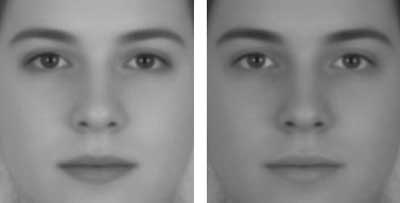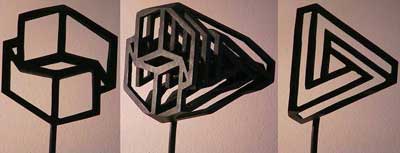World's Greatest Illusions Chosen
The three best visual illusions in the world were chosen at a gathering last weekend of neuroscientists and psychologists at the Naples Philharmonic Center for the Arts in Florida.
First Place: Holy curveballs, this is amazing!!!
{{ video="LS_090513_Curveball_Illusion" title="Jerky Curveball: It's All An Illusion" caption="Look at the spinning ball directly. It seems to fly straight. But look at the blue dot and the ball's spin fools your brain into thinking that the ball is curving. A flying baseball passes from central to peripheral vision so it appears to jerk. Credit: Bucknell University" }}
The winning entry, from a Bucknell University professor, may help explain why curve balls in baseball are so tricky to hit.
A properly thrown curve ball spins in a way that makes the air on one side move faster than on the other. This causes the ball to move along a gradual curve. From the point of view of a batter standing on home plate, though, curve balls seem to "break," or move suddenly in a new direction.
This year's winning illusion, created by Arthur Shapiro of Bucknell University in Pennsylvania, may explain this phenomena. His animation shows a spinning ball that, when watched directly, moves in a straight line. When seen out of the corner of the eye, however, the spin of the ball fools the brain into thinking that the ball is curving.
So as a baseball flies towards home plate, the moment when it passes from central to peripheral vision could exaggerate the movement of the ball, causing its gradual curve to be seen as a sudden jerk.
Second Place: The Colored Dove
In second place was an illusion of ghostly colors. Stare at a waterfall for a few minutes, look away, and the still world around you will appear to flow. The effect is called an "afterimage."
Scientists in Israel created a drawing of a sky with clouds that flashes red for a split second. A white dove flying across the sky seems to turn red seconds after the flash, showing that an afterimage color can linger in our vision and bleed into empty spaces.
{{ video="LS_090513_Color_Dove_Illusion" title="See Your Brain Play a Colorful Game" caption="In this picture, clouds in the sky flash red for a split second. A white dove will seem to turn red long after the flash, showing that an afterimage color can linger in our vision and bleed into empty spaces. Credit: Yuval Barkan & Hedva Spitzer (Tel-Aviv University, Israel)" }}
Third Place: The sex illusion
The third place award went to the pair of photographs below. One appears to be male; the other, female. Both faces actually belong to the same person, digitally altered by Richard Russell of Harvard University. The dark parts of the photograph are a little darker and light parts are a little lighter in the "female" photograph. The subtle changes suggest that one way our brains may sort out sex is to notice how strong the contrast is between features.
"Visual illusions show us where physical reality and our perceptions don't match, so we can get at what the brain is actually doing," says contest organizer Stephen MacKnik of the Barrow Neurological Institute in Phoenix.
The Trophy
Shapiro's trophy, a sculpture created by Italian artist Guido Moretti, is itself a visual illusion that changes shape depending on what angle it is viewed from.
Related Stories
- Key to All Optical Illusions Discovered
- Busting Baseball Myths: Scientist Throws Big Curveballs
- Magicians Know More Than Scientists
- Study Reveals How Magic Works
Inside Science News Service is supported by the American Institute of Physics.
Get the world’s most fascinating discoveries delivered straight to your inbox.
 Live Science Plus
Live Science Plus







